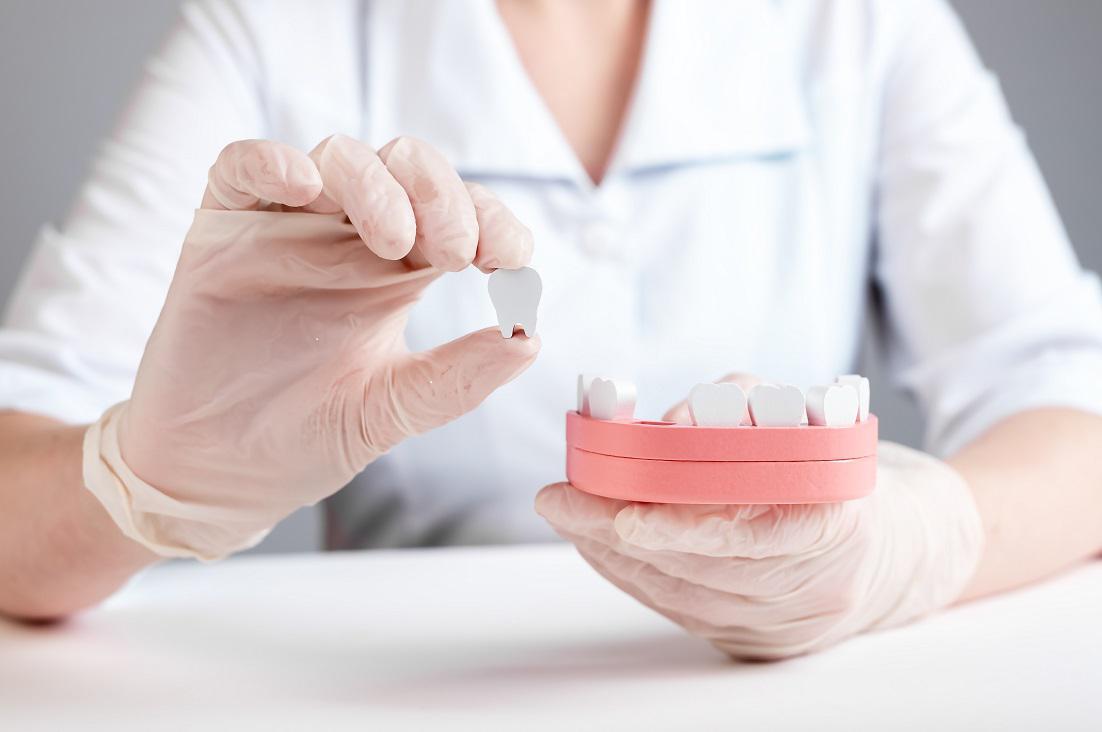 Do you have gaps in your smile because of missing teeth? Are you scheduled to undergo a dental extraction? If so, you are faced with the choice: to replace or not to replace. Our answer: ALWAYS replace missing teeth, with the exception of wisdom teeth. The benefits of replacing the teeth far outweigh the cons; we’ll talk more about this in the blog.
Do you have gaps in your smile because of missing teeth? Are you scheduled to undergo a dental extraction? If so, you are faced with the choice: to replace or not to replace. Our answer: ALWAYS replace missing teeth, with the exception of wisdom teeth. The benefits of replacing the teeth far outweigh the cons; we’ll talk more about this in the blog.
Before making your final decision, talk with our experienced and trusted dental team about your specific needs and circumstance. Call to schedule your appointment today!
Here are five reasons to replace missing teeth:
1. Preserve the Appearance of Your Smile
Let’s start with the obvious. Your smile is one of the first things that others notice about you, so replacing one or more teeth will help you feel comfortable in social situations. But this isn’t vain.
For most people, a complete smile provides a sense of self-confidence and assurance that benefits their productivity, work relationships, success, friendships, romantic relationships, and more. Don’t underestimate the power of a beautiful smile!
2. Maintain the Function of Your Smile
There are four types of teeth: canines, molars, incisors, and wisdom teeth. Each of these serves a purpose– to bite, grind food, and speak. So, when one goes missing, your mouth doesn’t function fully.
Without certain teeth, you may not be able to bite and chew certain foods properly. Additionally, gaps left by missing teeth can alter your speech and even lead to a permanent speech impairment.
3. Prevent Bone Loss
Here’s an interesting fact that most people don’t know: tooth roots stimulate the jawbone to keep it from deteriorating. About six months after a tooth has been lost, resorption of the bone in that area begins. This bone loss can lead to tooth movement and facial sagging.
To prevent bone loss and the subsequent consequences, you must replace the missing teeth with dental implants. This is the only restorative option that replaces the tooth root and crown. In doing so, the bone will regrow and integrate with the implant. A dental bridge or denture will not provide the same benefits.
4. Keep Teeth from Shifting
As mentioned above, tooth loss leads to jawbone loss, which results in shifting teeth. Consequently, the upper and lower arches become uneven, causing a wide range of issues from TMJ disorder to headaches.
A partial denture, dental bridge, or dental implant can keep this from happening by filling in the gap and preventing tooth movement.
5. Prevent Overgrowth of Opposing Teeth
Finally, the absence of a tooth removes the opposing force so that the opposite tooth stops growing at the right height. When there is a gap in the teeth, the opposing tooth grows longer to fill in the space. So, if you are missing your top front tooth, the bottom front tooth may grow longer than all of the other bottom teeth.
More About Your Tooth Replacement Options
Now that you’ve decided to replace your missing tooth or teeth, you have three main options: dentures, a dental bridge, or dental implant(s).
Dentures
If you are missing an entire arch of teeth, you may qualify for dentures. This is a full set of removable prosthetic teeth designed to look natural and help you eat and speak. Dentures are a quick and affordable option for patients who don’t qualify for dental implants and are concerned about cost.
Dental Bridge
A dental bridge may be your best option if you have one, two, or three consecutive missing teeth. The bridge is made up of two crowns and the needed number of pontics. The crowns are placed over the two teeth on both sides of the gap, and the pontics are suspended in the gap.
Dental Implants
Dental implants are the most recommended tooth replacement option because of their high success rate and ability to regrow and merge with the jawbone.
A dental implant is actually comprised of three parts: the implant, abutment, and crown. To place the implant, a dentist or oral surgeon makes a small incision in the gum tissue and carefully inserts the implant into the jawbone. Once the incision heals and the implant integrates with the bone, the abutment and crown are placed.
The timeline and exact process depends on the types of implants and technology your dentist uses.
Schedule Your Appointment Today
To determine your tooth replacement options, schedule a consultation to meet with our team. We will evaluate your smile and discuss the pros vs. the cons of each option, so you can make an informed decision. Give us a call today!


